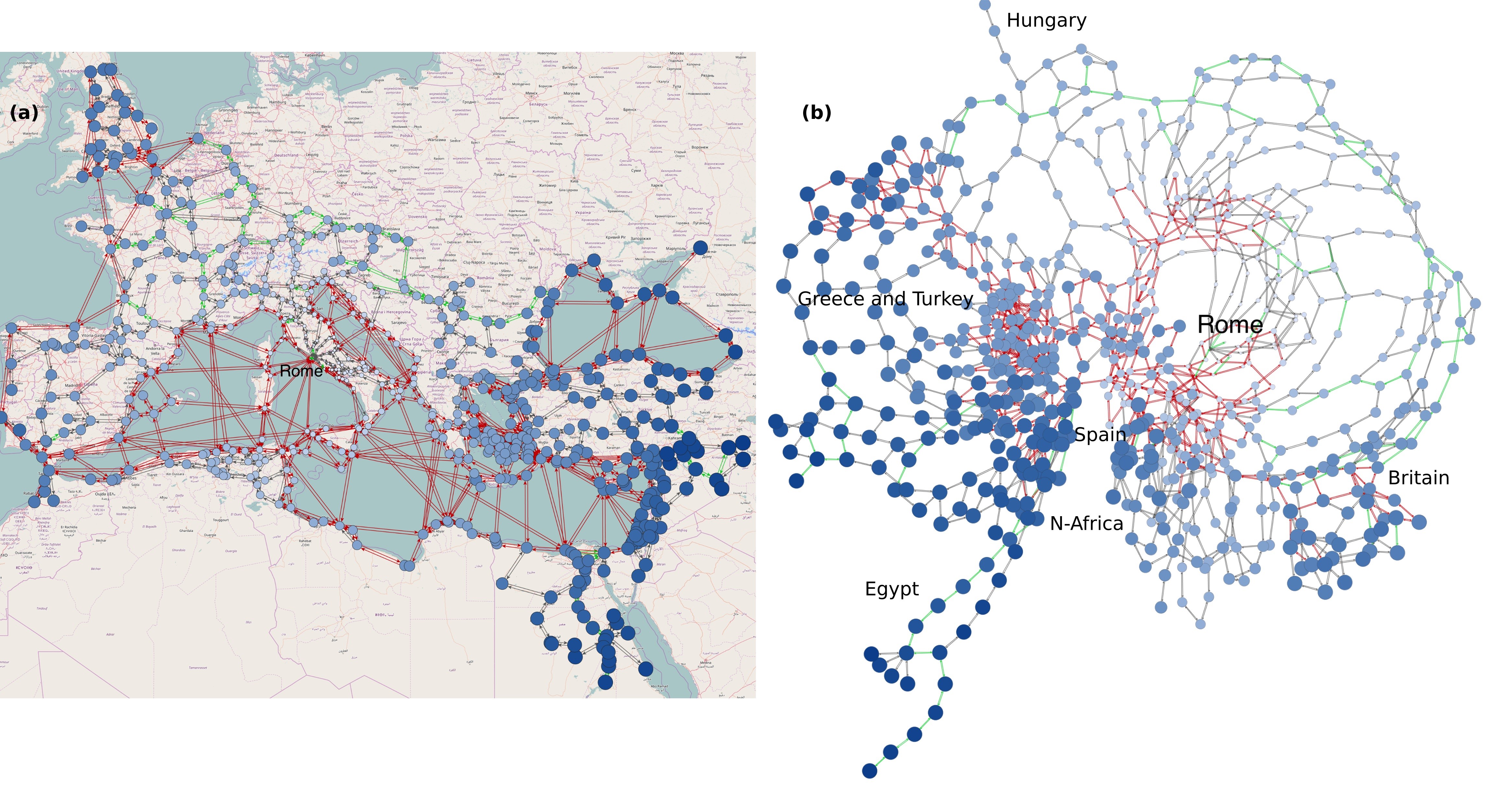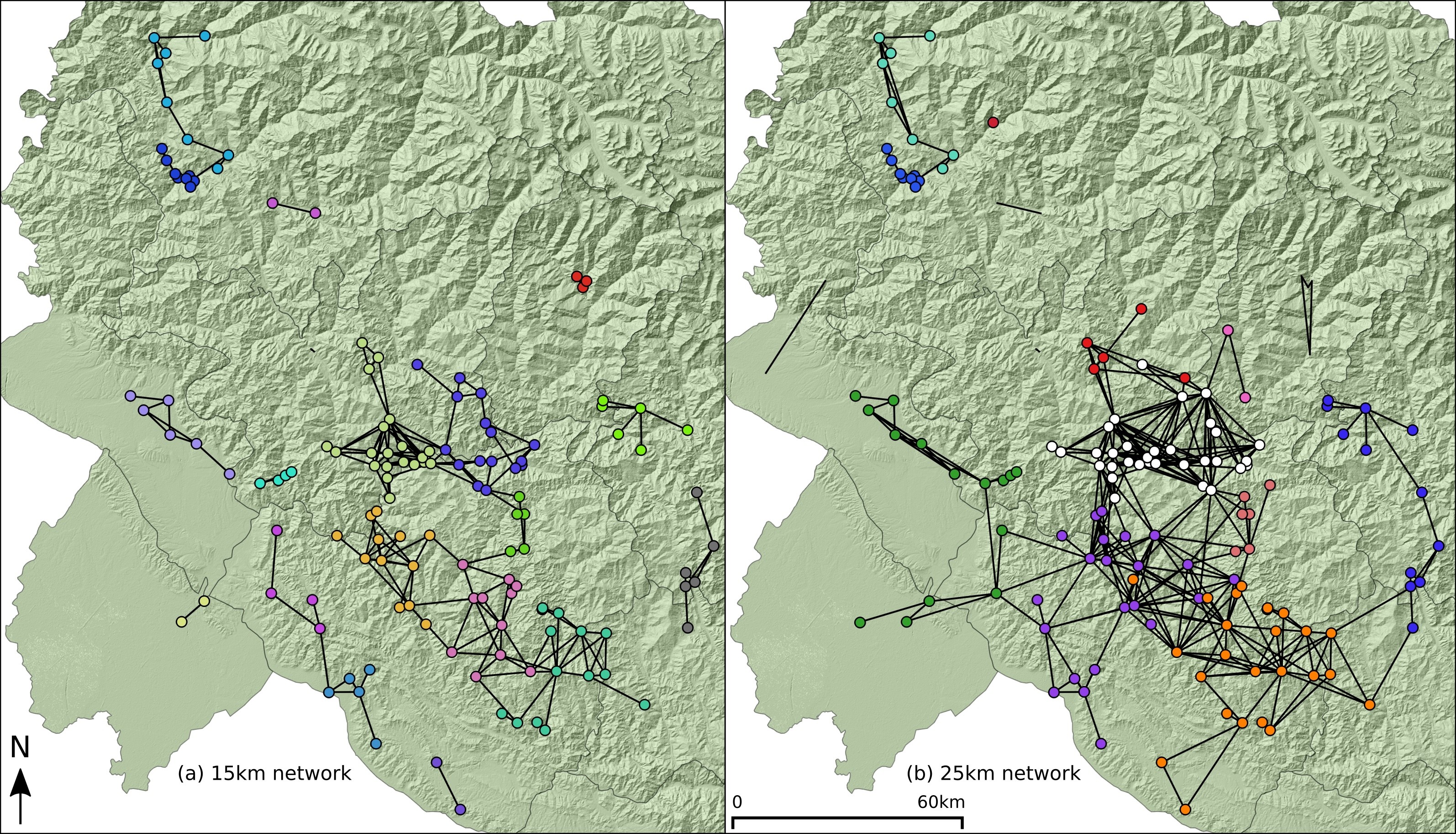UrbNet welcomes first associate professor, 1 Feb 2020
Introduction of Tom Brughmans.


To what extent did the Roman economy follow free market principles, and how did Roman transport technology structure interactions between markets? How can we evaluate the plausibility of hypothesised past visual signalling systems using fire or smoke to communicate over vast distances? How can archaeologists and historians leverage the potential of network and simulation approaches from a complexity science perspective, to enhance our understanding of the human past?
My research so far has focused on addressing these questions. But they also reveal scope for contributing to the research agendas in UrbNet, Classical Archaeology, Archaeology and Digital Humanities in Aarhus. I will give a very short overview of my work on these topics so far and then explain what excites me most about the research opportunities in Aarhus.
My PhD at the University of Southampton aimed at exploring the potential of network research for Roman archaeology through three case studies. First, I explored the connectivity through roads, material culture and visibility between hundreds of Iron-age and Roman urban settlements in southern Spain. Second, I analysed the citation behaviour of archaeologists by tracing how, when and from whom we adopted network methods. Third, I studied the degree of integration of the Roman economy using an agent-based simulation model, comparing simulated distributions of Roman and Hellenistic pots with their archaeologically attested distributions in the eastern Mediterranean. My postdoc at a computer science department in Konstanz allowed me to develop GIS methods for studying visibility networks connecting pre-colonial communities in the Caribbean. And during my postdocs in Oxford and Barcelona, I explored how we can better understand the functioning of the Roman economy through studies of Roman amphora reuse, the Roman road system and city population sizes.
My research interests in urban archaeology, network approaches and the Roman world are very much in line with those of UrbNet and the research programme in classical antiquity and its heritage. I am very excited about the opportunities to collaborate on these themes with colleagues in UrbNet, both archaeology departments and beyond.
In its first five years, UrbNet projects have collected vast amounts of high-definition archaeological data. But how do we tie this empirical evidence to UrbNet's theoretical perspective of connectivity within and between urban settlements? I believe the coming phase of UrbNet provides great potential for demonstrating through exceptional datasets that this theoretical perspective can make us rethink how urban societies around the world functioned. I hope to contribute to this effort through the use of formal network methods and simulation.
A further prospect that excites me is to identify new areas of archaeological application for these formal methods. One such research avenue is offered by the huge isotope and other natural science datasets being generated these days, including by colleagues in archaeology and UrbNet. How can the application of network and simulation methods to such datasets enhance our understanding of past human mobility and raw material procurement?
And then there's the Romans. Most of my substantive archaeology research has focused on the Roman world, and I find Aarhus' research programme in classical antiquity and its heritage to provide an inspiring framework to work in. Specifically because it urges us to consider how the tools we use to study classical antiquity shape the narratives we write. I'd be particularly interested in exploring publication and citation practice in classical archaeology through bibliometrics, and the ways in which computational methods can inspire multivocality by helping us develop more diverse rich narratives with reproducible building blocks.
Don't hesitate to get in touch if any of this interests you. I look forward to exploring these and many more opportunities for collaboration with colleagues throughout the School of Culture and Society!
